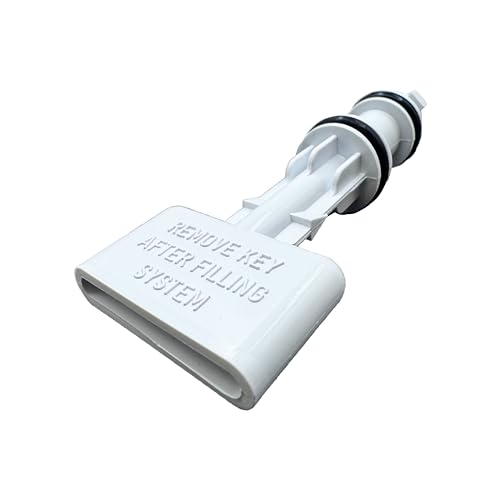What to do if your boiler pressure is too low – an expert-approved step-by-step to repressurise your system easily and effectively
Experts reveal the easiest way to get your heating system firing up efficiently again
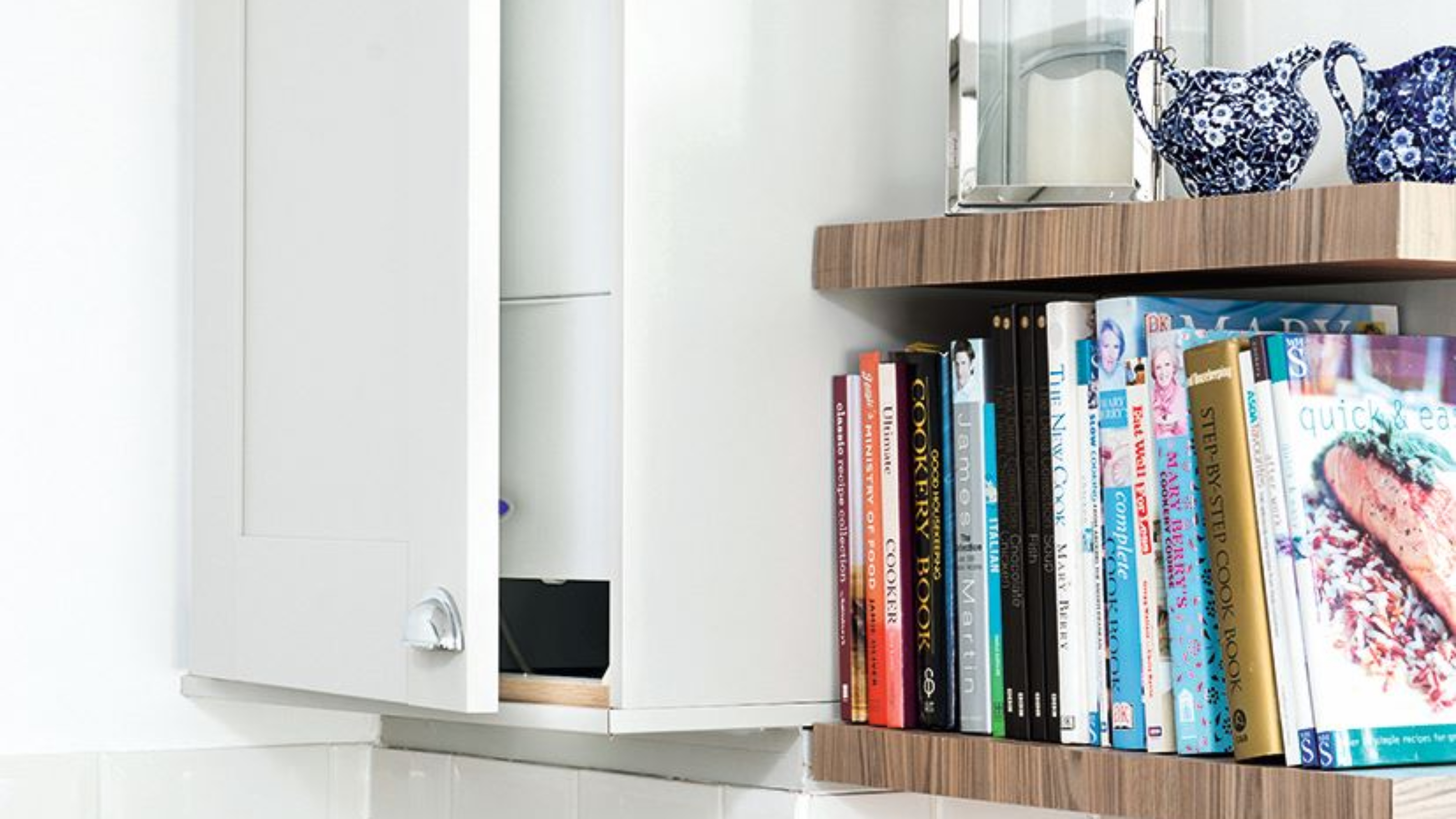

Your boiler plays a starring role in keeping your home cosy, but what happens when your boiler pressure dips too low?
If you're wondering how efficient your boiler is, be sure to look out for the telltale signs it has low pressure, like your radiators aren't heating up fully, inconsistent hot water, or an unfamiliar error code flashing on the control panel. Don't fret though as low boiler pressure is a simple problem to fix.
Stephen Day, Co-founder of iHeat agrees, 'When a boiler loses pressure, it can impact how well your central heating system functions. Identifying and addressing the reasons for a drop in pressure are key to restoring your boiler's performance. It is generally a manageable issue that homeowners can often resolve without immediate professional intervention.'
From identifying the causes of low pressure to safely adjusting your boiler's pressure, we’ll walk you through the process step by step, with expert tips to help you regain control of your home’s heating and get your boiler back to its efficient working order.
What is boiler pressure?
'Boiler pressure is a measure of the force at which water circulates in a closed central heating system,' explains Stephen Day of iHeat.
A properly functioning boiler typically operates at a pressure between one and two bar, with the sweet spot often marked in green on your boiler’s pressure gauge.
'The pressure is essential for the effective distribution of warmth throughout premises, ensuring hot water is readily available.'
Sign up to our newsletter for style inspiration, real homes, project and garden advice and shopping know-how
Low boiler pressure can be caused by a number of factors, including a leak in the heating system, if you've recently been bleeding your radiators, or general wear and tear.
'Low pressure in a boiler or heating system is normally associated with water loss or micro leaks. It can also be a result of somebody venting air from the radiators and not topping the water back up again,' explains Martyn Bridges, Director of External Affairs at Worcester Bosch.
'Micro leaks are very difficult to locate, they normally are so small that you don’t actually see any water stains. The most common area for micro leaks is around the radiator valves or air vent point. A slight discolouration normally is all that can be seen, as the tiny amount of water seeping through the valve or air vent evaporates from the heat.'
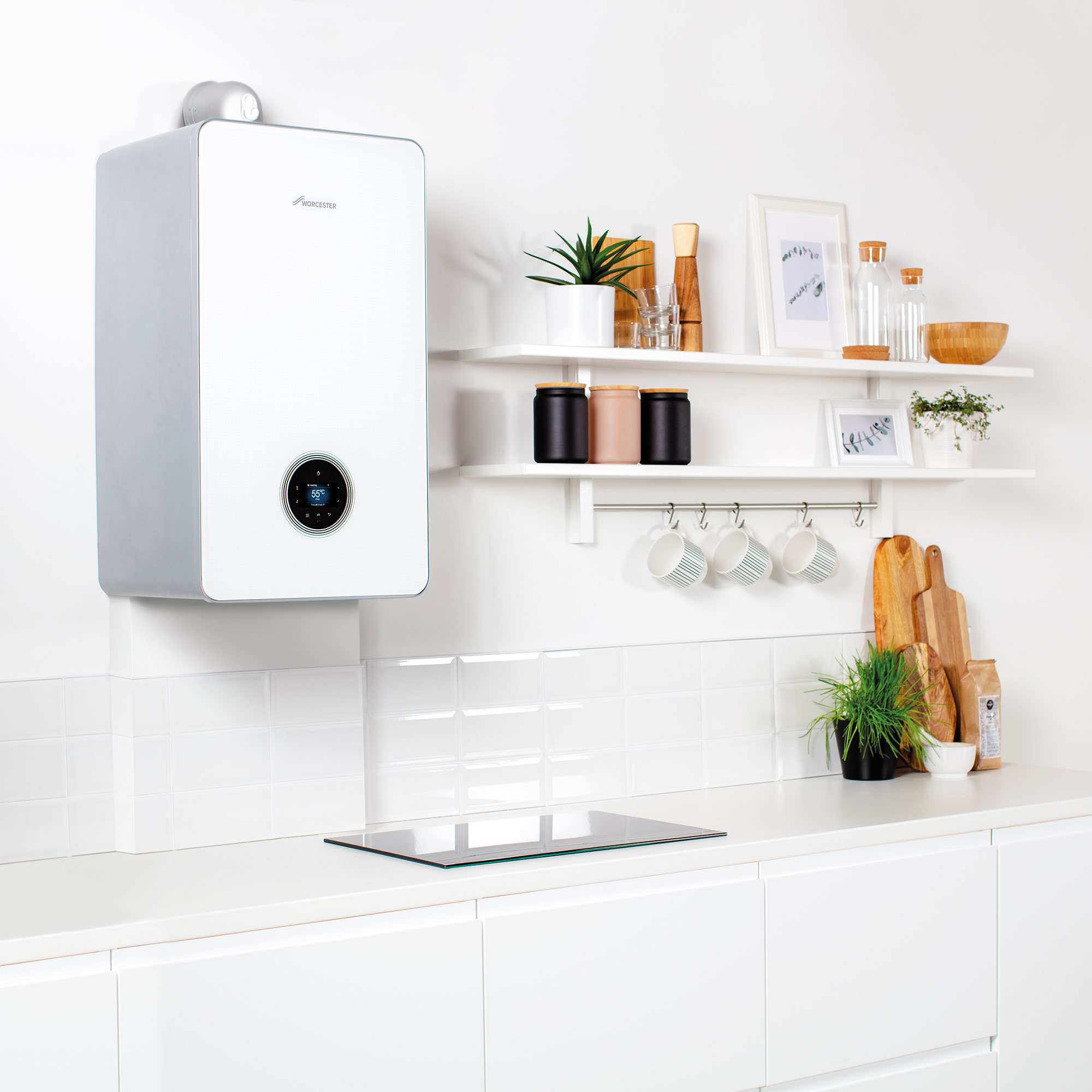
How to check if your boiler pressure is low
Before you pay the cost of replacing your radiators, you should definitely check your boiler pressure to see if that's where the problem is.
We've asked the experts to help figure out how to check the pressure on your system and fix it by yourself if needed.
1. Locate the pressure gauge
Most modern boilers have a pressure gauge on the front panel. Just look for a small dial with numbers and a needle pointing to the current pressure level. But what is this gauge?
'The pressure gauge, a critical component, allows for the monitoring of boiler pressure,' explains Stephen Day from iHeat.
'It forms part of the boiler but can influence the whole central heating system. A correct reading is crucial for diagnosing issues with either low or high boiler pressure.'
2. Identify the pressure reading
If your pressure is low, the needle on the pressure gauge will sit below one bar or into red. Anything between one and two-bar is considered normal pressure.
'The pressure gauge on your boiler indicates how much pressure is within the boiler and the heating system,' explains Worcester Bosch's Martyn Bridges.
'Normally, when the boiler is cold, the pressure gauge should read around 1-bar. When the boiler is running the pressure gauge will rise typically to between 1 and 2-bar. Most pressure gauges also have a useful coloured background, if the needle is in the red-coloured section more water needs to be added to the system via the filling link, if the needle is in the green then all is good.'
What to do if your boiler pressure is too low
1. Switch off the boiler
First thing's first, always consult your boiler’s manual for specific instructions or warnings related to your model.
For all models, though, the first thing you should always do is to turn off your boiler so you can work on it safely.
2. Check for visible leaks
Then, it's advised to give your radiators, pipes, and valves a once-over to check for any signs of water leakage.
'Leaks could manifest as damp spots on floors, hissing sounds from pipes, or visual drips. It is important to check all accessible pipes, especially those that are concealed or in low-visibility areas,' explains Stephen Day, Cofounder at iHeat.
If you spot a leak, you may need professional assistance to fix it before you try to repressurise your boiler.
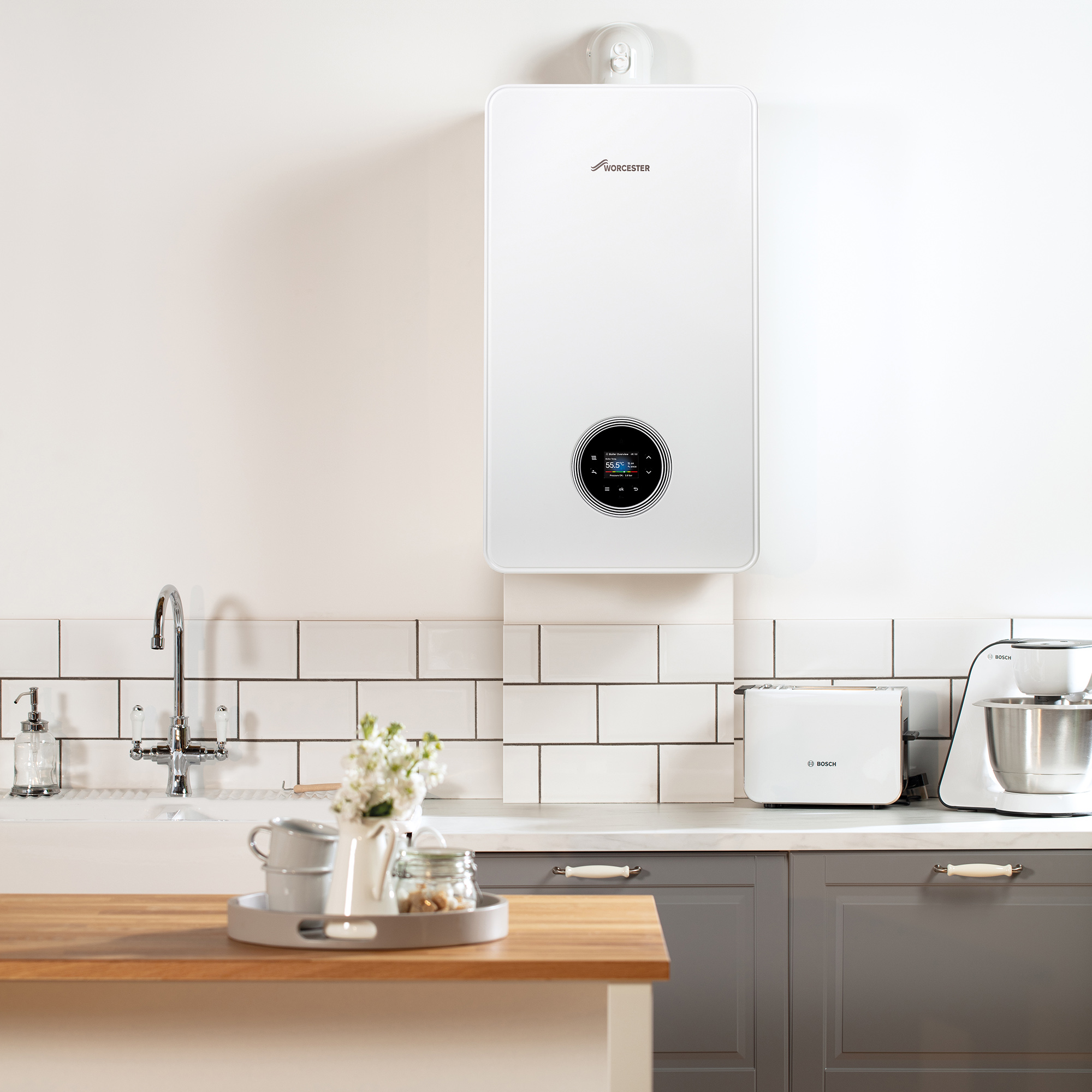
3. Locate the filling loop
If no leaks were found, you can get going with the repressurising. The first thing you'll need to do is find the filling loop and identify which type you have.
'The filling loop is typically a silver or grey flexible hose with a valve at each end and it's crucial for the task at hand. They will find this component beneath their boiler or within the boiler’s cupboard, and it is essential for introducing water into the system,' explains iHeat's Stephen Day.
However, there are, in fact, two types of filling loop; an external and an internal (key) filling loop.
'You'll be able to identify if you have an external filling loop, because there'll be two valves; one from the mains cold water and then a second valve which is connected to the heating system,' says Martyn Bridges, Director of External Affairs at Worcester Bosch.
And if you have an internal filling loop, there will be a key, usually located on a flap underneath the boiler or provided to you as part of the installation. If you've lost yours, it's easy to get a replacement on the likes of Amazon.
4. Open the valves
Once you've located the filling loop and what type you have, it's time to gently turn the valves on the filling loop to allow water to flow into the system.
You should hear a soft whooshing sound as the water enters, 'starting with the one closest to the boiler, then the second valve. This should be done slowly to mitigate any potential risks,' explains Stephen Day of iHeat.
If you're dealing with an internal filling loop that requires a key, Martyn Bridges from Worcester Bosch has provided the following step-by-step.
- 'On the front right hand side you'll notice an open black port and this is where the key fits.
- You'll notice a picture of an open padlock and a closed padlock and on the white key there is an arrow on the shaft, align the arrow with the open padlock as you push it up into the open port.
- Turn the key and watch the pressure rise to just over one bar.'
5. Monitor the Pressure Gauge
It's important at this stage to keep looking at the pressure gauge to make sure the water fills to the appropriate level. Avoid overfilling, as high pressure can cause its own set of issues.
'Watch the boiler’s pressure gauge and stop filling once the needle aligns with the recommended pressure level (usually between 1 and 1.5 bar cold and 2-2.5 hot),' says Stephen.
6. Close the valves
Once the pressure is at the desired level, close the valves tightly to prevent water from continuing to flow.
And if you have an internal (key) filling loop, Martyn Bridges advises, 'turning the key back to the open padlock and remove. Be mindful of any water dripping.'
After closing the valves and stopping water flow, it's time to turn on the heating again.
'Restart the boiler and, if needed, hit the reset button,' advises Stephen Day. 'The boiler should now function with restored water pressure. If the pressure continues to drop frequently, it may indicate a leak or issue with a pressure relief valve, requiring professional assessment.'
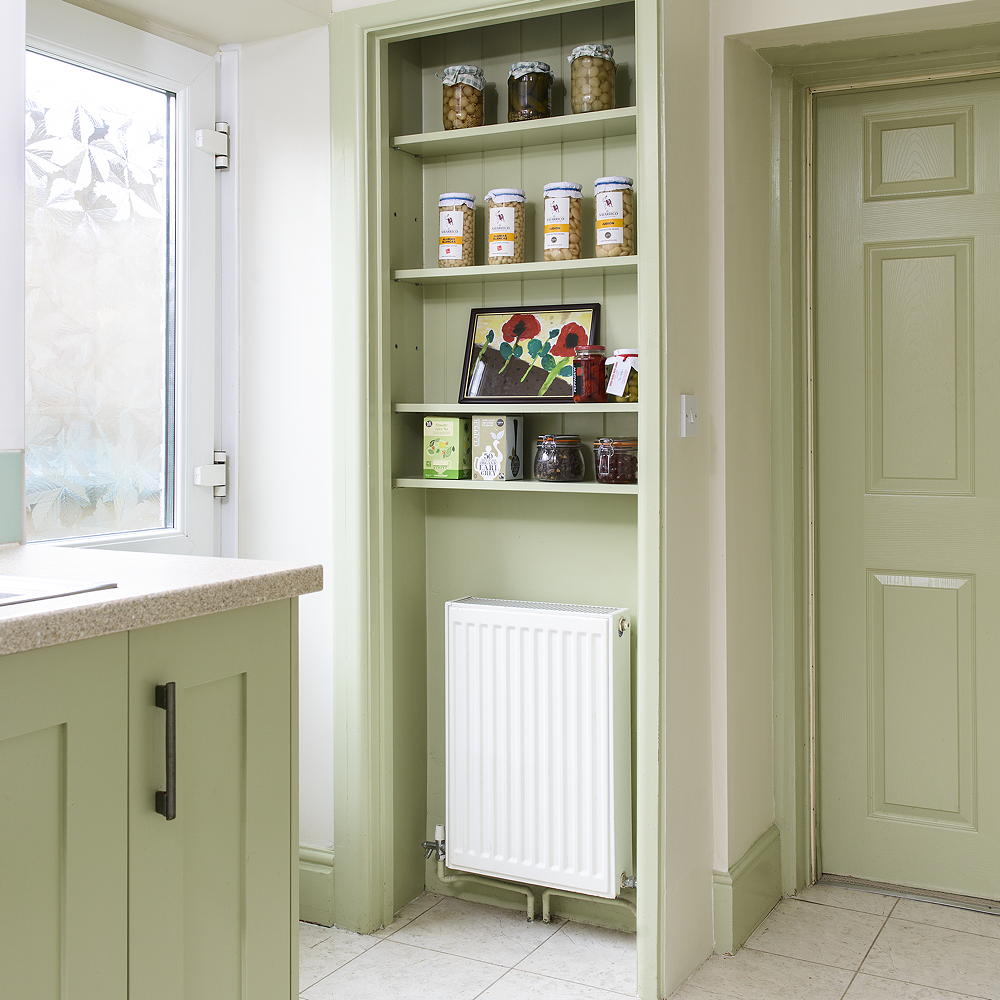
Preventing future boiler pressure problems
If your boiler pressure keeps falling after repressurising, you'll need to check for hidden leaks that are a lot harder to spot, like in pipework behind walls.
Failing that, if your boiler has persistent pressure loss it might indicate a faulty pressure valve and an internal issue that only a professional can sort. It could also indicate you need to get your boiler properly serviced.
FAQs
Is it safe to leave a boiler with low pressure?
We asked Martyn Bridges, Director of External Affairs at Worcester Bosch.
'A low pressure is not unsafe, in fact many boilers have a low system pressure function where the boiler won’t fire if the pressure is too low.'
However, it's no recommended to leave it with low pressure as it may stop functioning properly over time and may even damage internal components.
Can a boiler just lose pressure without a leak?
Yes, according to experts, a boiler can lose pressure without an obvious leak. It might happen due to trapped air in the system, a recently bled radiator or a pressure relief valve releasing too much pressure over a long period of time.
'It isn’t unusual to have to top up the water pressure in the system 2 or 3 times per year,' suggests Martyn Bridges, Director of External Affairs at Worcester Bosch.
'If this is required more regularly then there may be a more prominent leak, pipework routed under concrete floors is a common point where a bigger leak may be.'
So, there you have it, by following these simple steps, you can ensure your boiler’s pressure stays in check and your home stays warm and cosy all winter long.

Jenny is Senior Digital Editor and joined the team in 2021, working across Ideal Home, Real Homes, Homes & Gardens, Livingetc and Gardeningetc. Since getting on the property ladder, her passion for interior design and gardening has taken on a new lease of life. She loves collecting and salvaging unique items (much to her other half's despair) but sniffing out stylish home bargains is her one true love.
